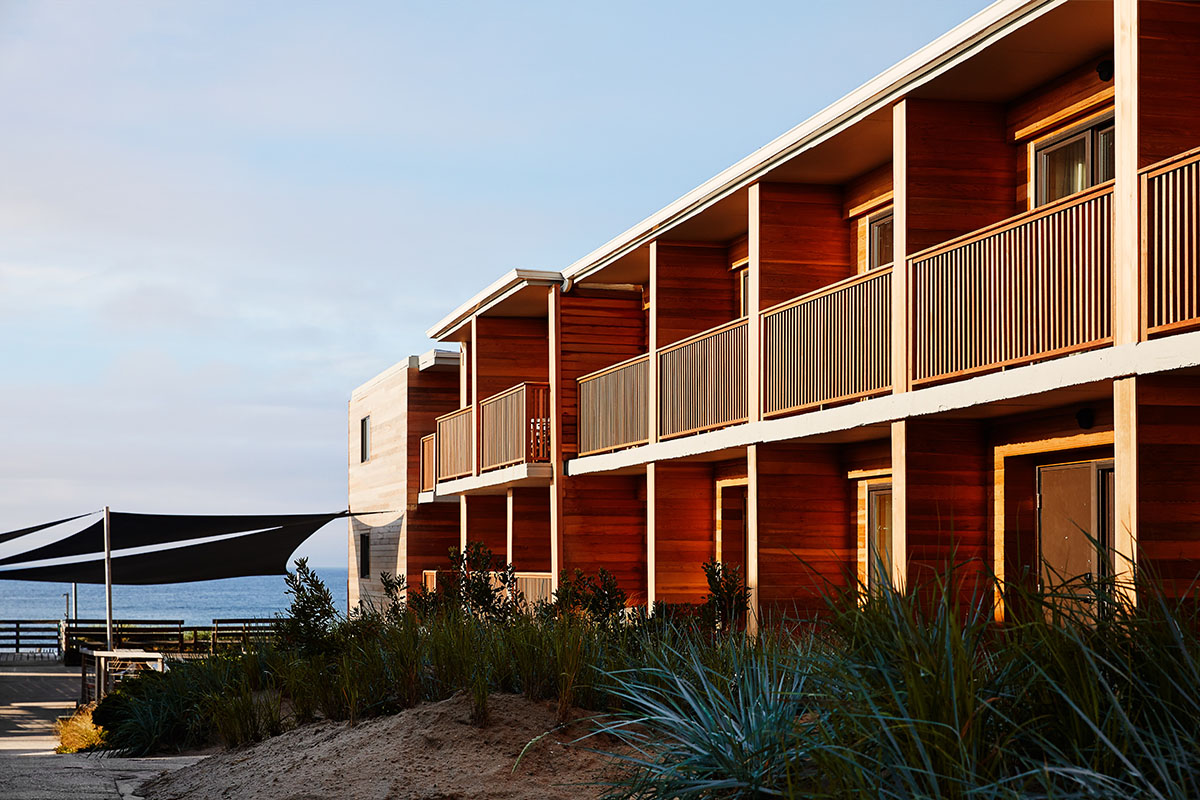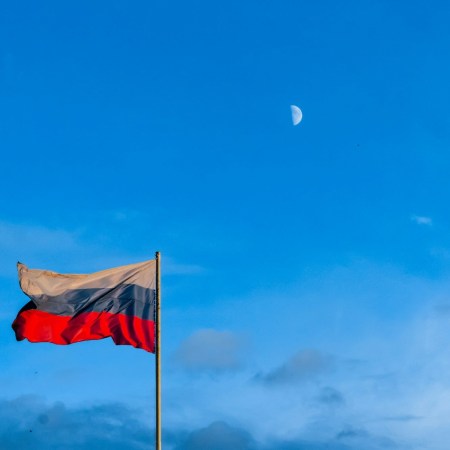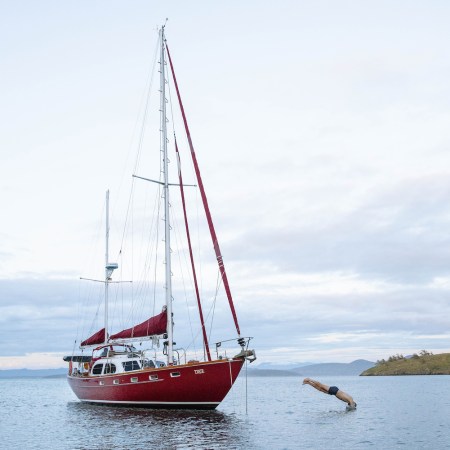I left my balcony door open both nights at Marram Montauk last week, with only a screen and a shade separating my room from the roar of the surf. If there’s a better white noise machine than the East End on a misty weeknight I’d love to hear it. Sleep arrived gently, like just about everything else at the monastic, four-star retreat, which recently reopened its doors for the 2022 season after some light renovations.
Before there was Marram there was Atlantic Terrace, a yellow, family-run motel with a shuffleboard court. It was built in the 1960s — a time when the year-round population of the town was less than a grand, the town was only serviced by New England local news stations, all shops were closed on Sundays and interested buyers could purchase a home in town for $12,000…at Macy’s in Herald Square.
Atlantic Terrace had easy panache with surfers, for its access to “Terrace,” a sand-covered reef that regularly tubes riders and is considered one of the “best south-facing breaks in all of Long Island,” especially during hurricane season. But those swells didn’t go anywhere when hospitality group Bridgeton Holdings purchased Atlantic Terrace in the summer of 2018. And neither did the property’s proximity to Montauk’s downtown; Marram is a two-minute walk to the village’s panini shops and famous brewhouse, while only a five-minute drive from The Surf Lodge and the train station.
When reimagining 21 Oceanview Terrace, the new owners, who just last month sold the place to ever newer owners (turning an apparent $40 million profit) clearly prized the property’s convenient perch. Marram doesn’t feel like a resort that happened to Montauk, so often the case on America’s precious coastlines. It’s thematically of it.
Look to the name (“marram” refers to Ammophila arenaria, the native beach grass of the region), the free bikes stationed outside the lobby (which attendants encourage for exploration around town and Shadmoor State Park next door), or, perhaps most on the nose, the real, physical dunes separating one room from the next, which line the pathway from the parking lot to the ocean. In the Atlantic Terrace era, these dunes were grass lawns.
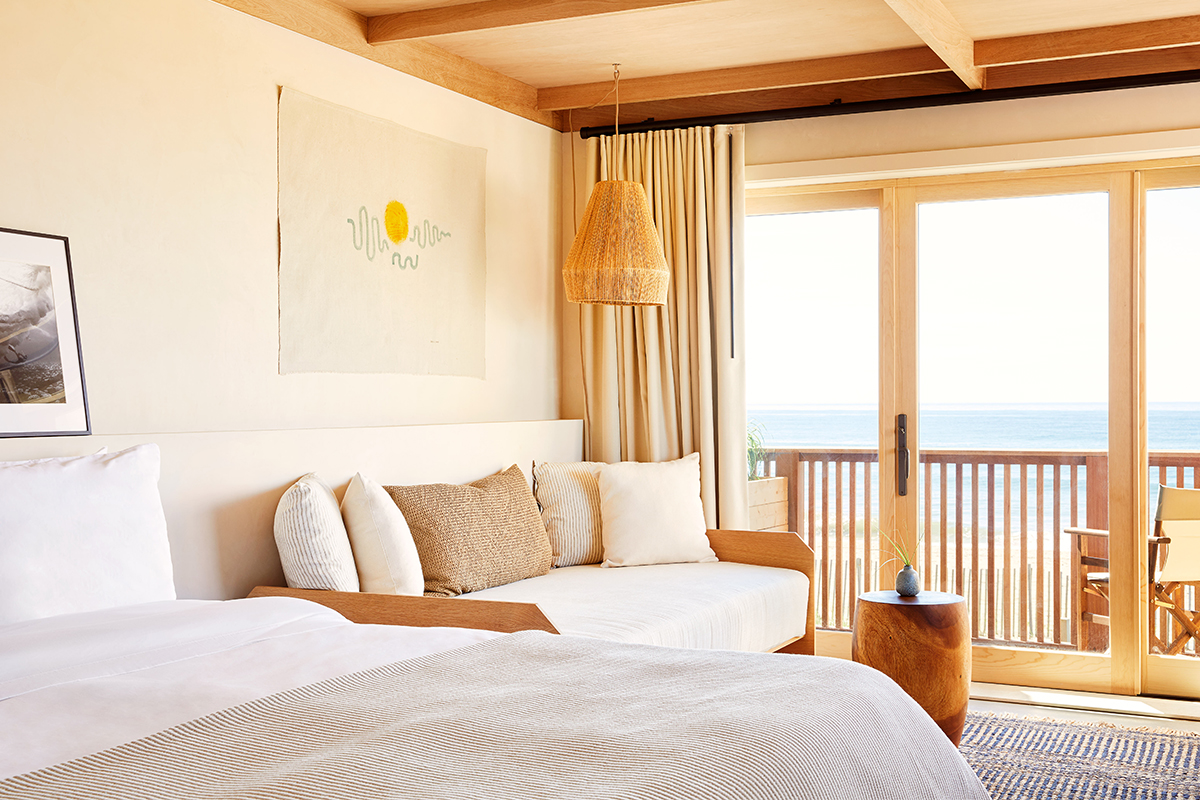
The design heads at Marram could’ve gutted the old place, painted the interiors a fresh coat of light blue, hung up some maritime paraphernalia and called it a day. Or they might’ve leaned into Old World, country club grandeur — the sort of fare found at stodgier, westerly resorts. They elected for neither. Marram’s guest rooms, suites, outdoor seating and common areas revel in an updated currency of cool: geometric paper lanterns, canvas director’s chairs, stone floors that won’t balk at a bit of sand, rainfall shower heads, handwoven rugs and white oak ceiling beams.
The mid-century motel architecture remains (it’s having a renaissance here, like everywhere else), but the exterior of the buildings is now covered in cedar siding. There is nothing overtly opulent about the boutique hotel’s pitch — there’s no room service, nor watching TV from bed…if your team’s got a big game, head to a pub in town — but that’s precisely the point. Recurring art pieces by Sean W Spellman, a Rhode Island-based painter, perhaps best encapsulate the s’mores and flip-flops brand of zen on offer at Marram. The prices are steep, for both the paintings and the rooms that house them, but the stakes couldn’t be lower. Most of Spellman’s artwork features the sun, a wave and some squiggles where the clouds meet the horizon.
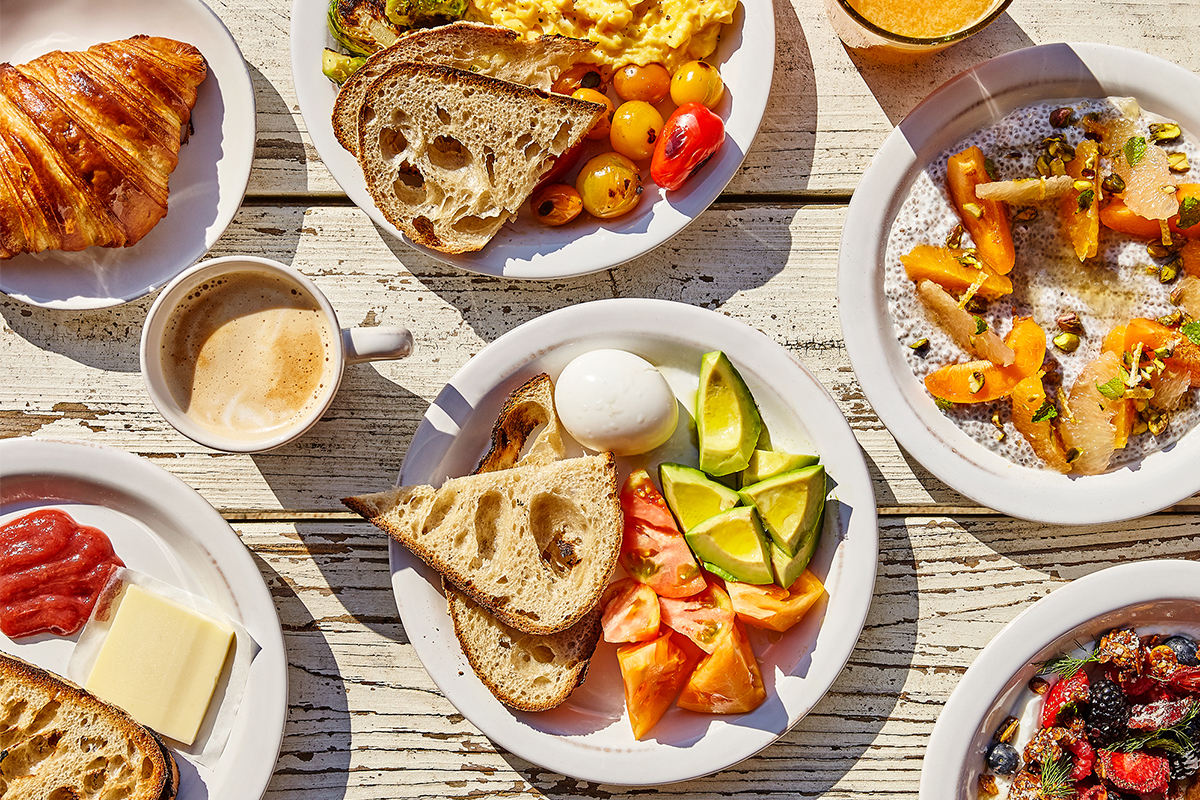
Hours pass by without much fanfare at Marram. During one of my full days at the resort, I woke up at half past seven and made my way over to Marram’s daily yoga session, where six of us spent an hour working on moves to ease low back pain. After that: some reading by the pool, some reading on the sand and a run to the Montauk Point Lighthouse, where I followed some surfboard-fitted Jeeps on a path down towards the water. I technically needed a New York State permit to be on the path, but no one gave me any trouble.
Later, a small symposium with Amanda Merrow, of Amagansett farm Amber Waves, and Amanda M. Fairbanks, author of The Lost Boys of Montauk, as they riffed on life in the East End: how they made lives here, why they stayed, what it’s like in the winter, who qualifies as a “local” in a place where family names date back hundreds of years. Merrow talked about the low-schist soil that makes the area’s harvests so bountiful (in the summer, they’ll grow everything from kale to sweet peppers to beach plums) while Fairbanks spoke on Montauk’s proud fishing tradition.
That uncommon confluence of land and sea is best represented at Mostrador Marram, the on-site South American cafe, which, in my opinion, represents the very best of what Marram has to offer. The term mostrador translates to “counter,” and that’s really all Mostrador is, a window to pick up breakfast, lunch, an aperitivo, or dinner, to be eaten at a picnic table or on the beach.
There is such love in these plates, prepared by a team of Southern Hemisphere cooks chasing their own version of endless summer. They are Argentinian and Uruguayan, working under the banner of the Martin Pittaluga and Fernando Trocca, who have three globally-renowned restaurants in Uruguay. This kitchen flies in for the summer, living off-campus, and finds time to surf Terrace in the hours between meal prep and clean-up. Good luck anointing a favorite dish, especially if you make time for all three meals of the day. I’m still thinking about those clams in red sauce (with a side of fluffy-crunchy potatoes), a row of fluke in olive oil and sea salt, the roasted carrots and their summer squash. Breakfast might’ve topped it all: a perfect serving of scrambled eggs, plump cherry tomatoes, dressed Brussels sprout and sourdough toast.
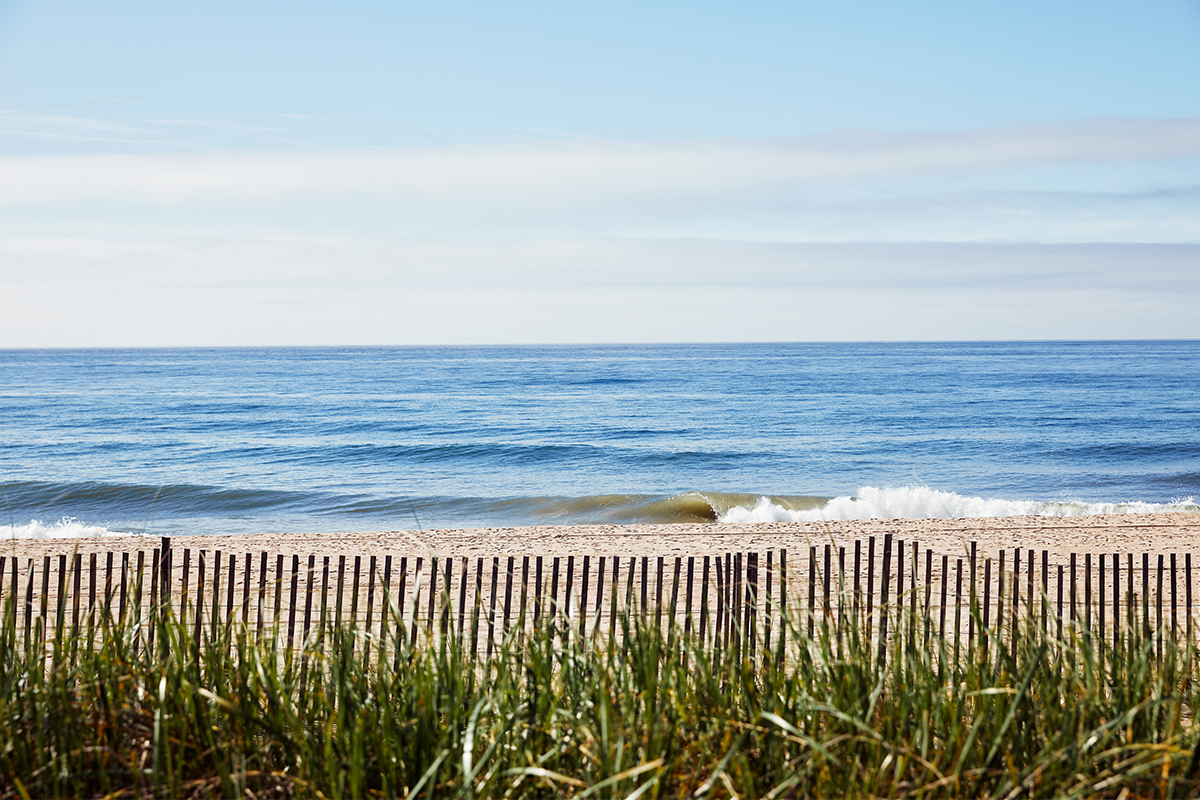
The Argentinians and Uruguayans brought their wine, too, thank god, though it was touch-and-go for a while there on whether Marram was ever going to get its liquor license. Marram was BYOB every year until this season (it officially opened back in August 2019), and its former owners faced a literal injunction from its irritated neighbors across the street, who claimed that the property had not once served alcohol in its 50-plus years of history.
Because Marram is in a part of town zoned for residential use, the crustiest of the locals felt justified in blocking Marram’s bid for cocktails, and warned that the hip hotel would soon become a party destination in line with Gurney’s, The Crow’s Nest and all the other late-night spots that now compel Uber drivers to loiter in a hamlet three hours away from New York City. But Marram, its manager told me, was able to produce photographic evidence that the address had once sold drinks — and besides, the property predated the latest zoning laws. It’s it a preexisting business.
It’s also not the sort of business that letter-writing types think it is; perhaps at the close of this summer, after the new drinkery has spent four months serving caipiroskas, mojitos and watermelon vodkas, the rest of town will understand that this place isn’t interested in hosting DJ sets or summer interns spending a weekend with their parents’ American Express. Marram mixes modest (yet delicious) end-of-day drinks. They’re best enjoyed with a sunset or a bonfire, and they’re meant to ease one’s bones before another wave-crashing eight hours in bed.
There’s a comment that stuck with me from my time at Marram, made by Captain David Ryan, who hosts visitors for sails on his beloved Mon Tiki Catamaran with his wife Amelia. They cruise around Lake Montauk all summer. I asked him about the influx of newcomers over the years, the many headlines about partygoers, the perception that Montauk is veering away from its roots. He acknowledged the changes; he’s lived there with his family for 25 years. But he insisted: “I’d rather live somewhere people want to come to, than somewhere everyone’s trying to move away.”
Marram is an expensive stay, make no mistake about it. A three-night package in the summer starts at $2,000. But the property deserves credit for the ease of operation its brought to a situation where it’s simply impossible to please everyone. They’ve championed homegrown talent, goods and expertise at every turn. (One experience I unfortunately missed out on, due to dangerous rip curls, was a private surfing lesson with the legendary Engstrom siblings, who operate a surf shack on the Marram grounds).
It took me an embarrassingly long time to figure out what the emblem that dots Marram’s keycards, signs and the caps of workers was in reference to. On my second day, during an hour-long walk from the hotel up to Ditch Plains Beach, another surfing haunt, which passes a stretch of coastline where Shadmoor meets the ocean, I figured it out. Beachgoers in the area like to make little piles of rocks, with the biggest at the bottom coning to a small spire at the top. (They’re called cairns.) Once I found them out near the water, I spotted them everywhere around Marram. They’re calming to look at, in a quiet, enchanting way. And of course, they mean something to the area. Little wonder that’s what the hotel chose for its logo.
The Charge will help you move better, think clearer and stay in the game longer. Subscribe to our wellness newsletter today.
